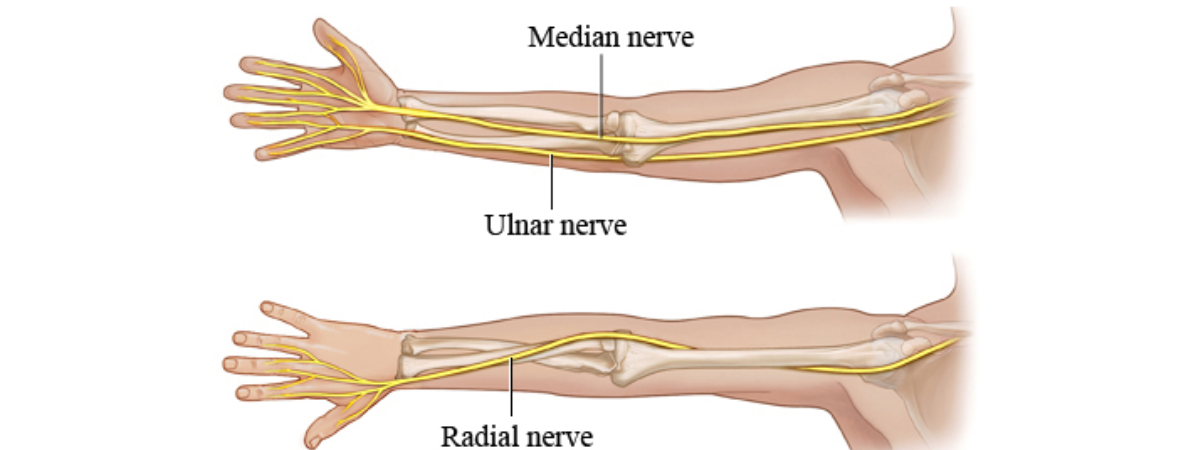Working Time
| Sunday - Friday | 07:00 AM - 11:00 PM |
| Saturday | Closed |
| Other Time | On Appointment |
Book Appointment
Introduction:
A torn bicep can be a painful setback, impacting both daily activities and fitness routines. Whether it's a partial tear or a complete rupture, understanding the expected recovery time is crucial for individuals on the path to healing. In this blog post, we will delve into the various factors influencing the recovery timeline and provide insights into what to expect during the rehabilitation process.
Understanding Bicep Tears:
Before we explore the recovery journey, it's essential to grasp the nature of a torn bicep. The biceps, a prominent muscle in the upper arm, consists of two main tendons that attach it to the shoulder and elbow. A tear can occur either at the shoulder (proximal bicep tendon) or the elbow (distal bicep tendon), resulting in varying degrees of impairment.
- Partial Tears:
Partial tears involve damage to a portion of the tendon but do not completely sever it. Recovery for partial tears is generally less extensive than for complete tears. - Complete Tears:
A complete tear implies a full rupture of the tendon, often requiring surgical intervention for optimal recovery. Recovery for complete tears involves a more comprehensive rehabilitation process.
Several factors contribute to the expected recovery time for a torn bicep, and these can vary from person to person. Here are key elements that influence the rehabilitation timeline:
- Severity of the Tear:
The extent of the tear, whether partial or complete, significantly impacts recovery time. Complete tears generally necessitate a longer and more involved recovery process, especially if surgical intervention is required. - Type of Treatment:
Non-surgical approaches may be suitable for some partial tears, involving rest, ice, compression, and physical therapy. Surgical intervention is often recommended for complete tears or cases where conservative methods prove ineffective. - Surgical Procedure:
If surgery is deemed necessary, the specific procedure performed can influence recovery time.
Postoperative rehabilitation protocols may vary based on the surgical technique employed. - Individual Health and Age:
The overall health of the individual and their age can impact the body's healing capacity. Younger, healthier individuals may experience a quicker recovery compared to older individuals with underlying health issues. - Adherence to Rehabilitation Protocols:
Strict adherence to rehabilitation exercises and protocols prescribed by healthcare professionals is crucial for a successful recovery. Consistency in following guidelines helps prevent complications and ensures optimal healing.

Expected Recovery Timeline:
- Partial Tears:
For minor or partial tears, conservative treatment may be sufficient. Initial rest and immobilization are followed by a gradual introduction of physical therapy. Recovery can range from a few weeks to several months, depending on the individual's response to treatment. - Complete Tears (Non-Surgical):
Non-surgical approaches for complete tears involve rest, ice, compression, and physical therapy. Recovery may take several months, with a gradual return to normal activities as strength and flexibility improve. - Complete Tears (Surgical):
Surgical repair is often recommended for complete tears, especially if the individual is physically active. The initial recovery phase involves immobilization and protection of the repaired tendon. Physical therapy is gradually introduced, with a return to full activity typically taking several months.
Tips for a Successful Recovery:
- Follow Medical Advice: Adhere to the treatment plan prescribed by healthcare professionals, whether surgical or non-surgical.
- Physical Therapy: Engage in prescribed physical therapy exercises to improve strength, flexibility, and range of motion.
- Gradual Return to Activity:Gradually reintroduce activities and exercises as guided by healthcare professionals to prevent re-injury.
- Monitor Pain and Discomfort: Pay attention to any persistent pain or discomfort during recovery and report it to your healthcare provider.
- Patience and Persistence: Understand that the recovery process takes time, and patience is key. Consistency in rehabilitation efforts is crucial for a successful outcome.
Conclusion:
Recovering from a torn bicep requires a strategic approach that considers the specific circumstances of each individual. Whether opting for conservative treatment or undergoing surgery, the expected recovery time is influenced by various factors. By understanding these factors and actively participating in the rehabilitation process, individuals can navigate the road to recovery with greater confidence and optimize their chances for a successful outcome.
About the Author:
Dr. Srikanth Varma, a distinguished Orthopaedic Surgeon, is a specialist in Orthopaedic and Hand Surgery in Al Nahda, Dubai. Armed with qualifications including MBBS, MS (Orthopedics), FNB, FIAS, and FIAP, Dr. Racherla is a seasoned professional in the field. His expertise lies in Trauma, Hand, and Wrist surgeries, with a particular focus on Reconstructive Microsurgery, Peripheral Nerve Surgery, and Tendon Repairs and Transfers. Renowned for his commitment to excellence, Dr. Srikanth Varma is a trusted name in delivering comprehensive orthopaedic care in the dynamic medical landscape of Al Nahda, Dubai
Recent Posts
Navigating the Dislocation Dilemma: Can Your Finger Take the Hit?

Read More
Navigating the Intricacies: Unraveling the Major Nerves of the Hand

Read More
Decoding Connective Tissues: Unveiling the Differences Between Tendons and Ligaments

Read More
Pinched Nerve? Here’s 7 Home Remedies to Help Reduce Some Pain

Read More
Unveiling the Pain: Diagnosing and Treating Carpometacarpal Joint Arthritis in the Hand

Read More
Is Your Phone Causing Wrist Discomfort? Exploring the Link with Dr. Srikanth Varma, Orthopedic Hand and Micro Surgeon in Al-Nahda

Read More
Unraveling the Mechanics: Can You Dislocate Your Finger?

Read More

